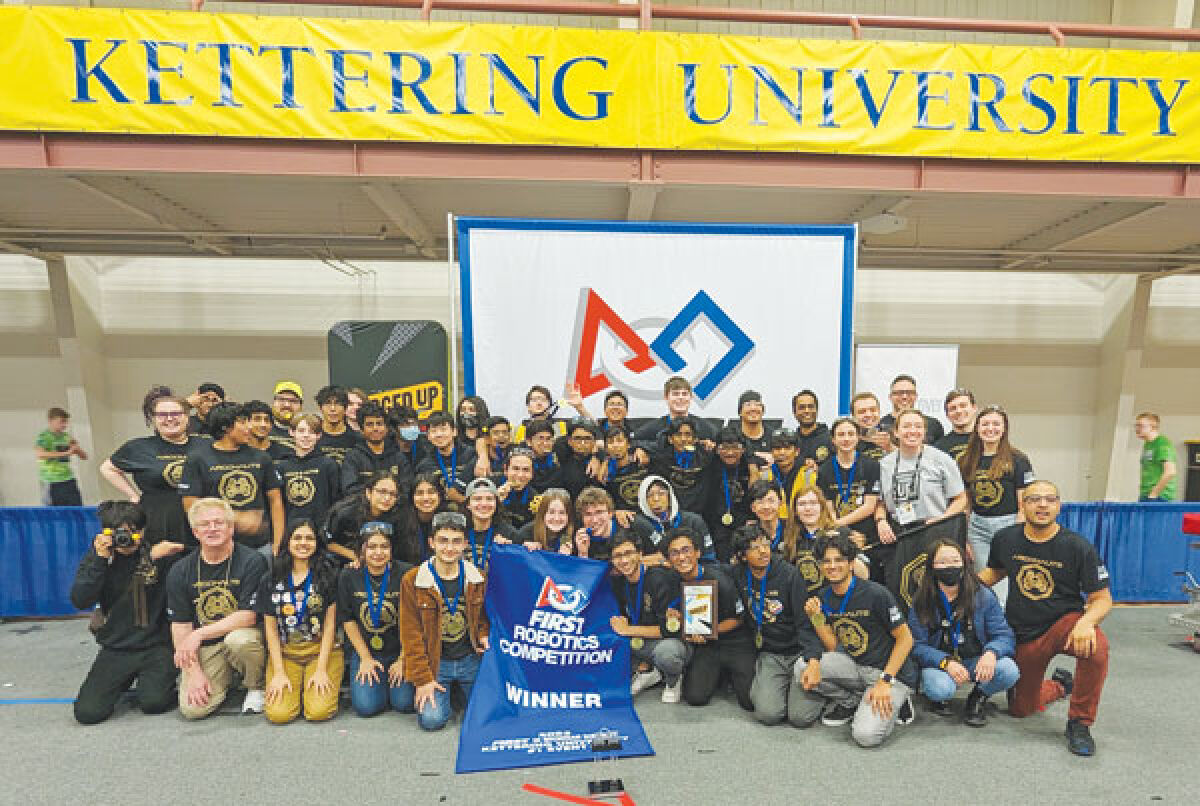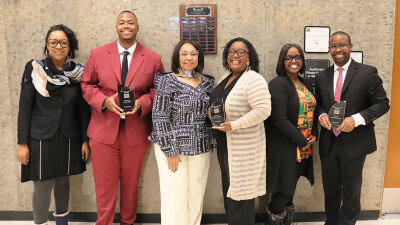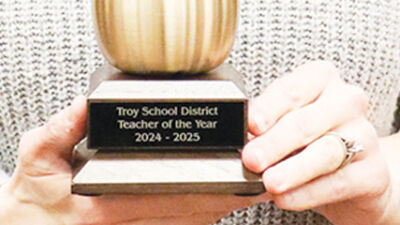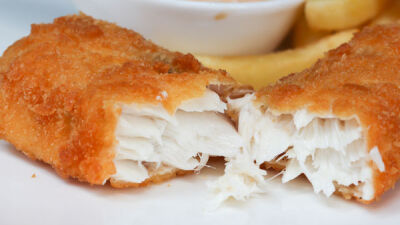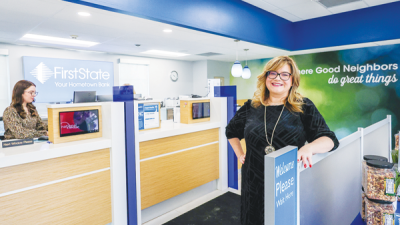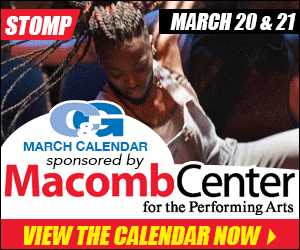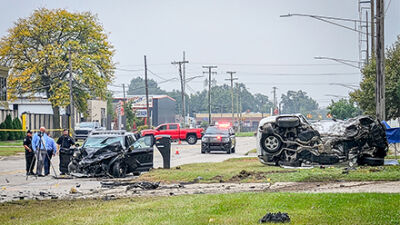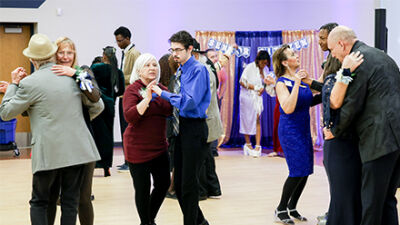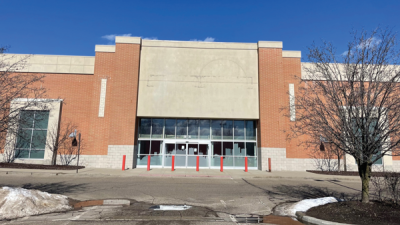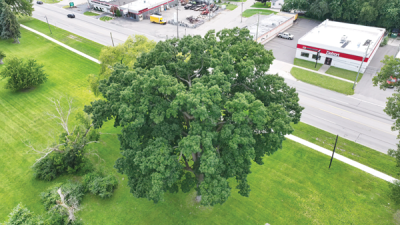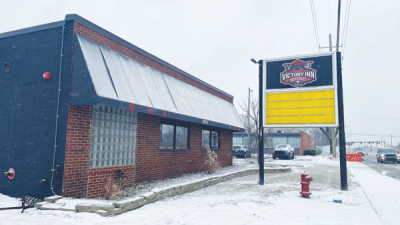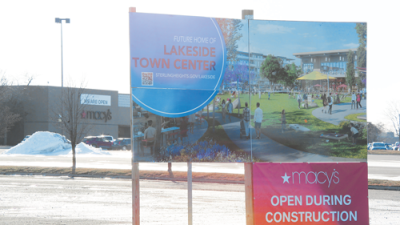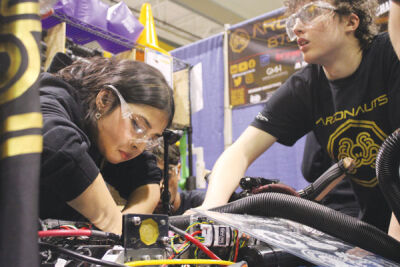
Quick thinking and adaptability were credited by some on the team with the Argonauts of Troy Athens’ success this season.
Photo provided by Kelly Malone
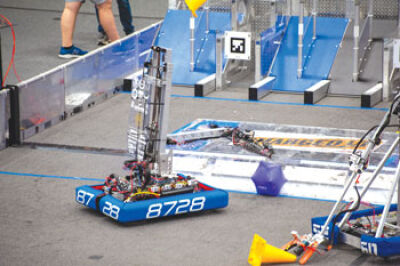
Every FIRST Robotics match teams up three teams to compete against three other teams in a game that changes each year.
Photo provided by Kelly Malone

Members of the Troy Athens Argonauts make adjustments to their robots the day before heading off to a district match at Cass Tech High School in Detroit.
Photo by Brendan Losinski
TROY — Despite being only in their second year of existence, the Troy Argonauts FIRST Robotics team of Troy Athens High School has qualified for the league’s state competition.
Until COVID-19, the students of Troy Athens would join a combined team with students from Troy High School, known as the Hammerheads. Srinivas Simhan, the head coach of the Troy Argonauts, said the new arrangement has been challenging, but he is seeing a positive impact on the students of the new Argonauts team.
“I was involved with the Hammerheads, which was the combined Troy High-Troy Athens team, for several years,” Simhan said. “Coming out of the pandemic, we had more than 150 students coming out for the team, so we wanted more opportunities for the kids and split the team up between the two schools.”
He said he was surprised to see how quickly the new team was able to get off the ground and find its footing.
“We’ve already finished two competitions, and we won the first with our alliance partners. At our second, at Wayne State University, we ranked sixth overall and we qualified for the state championships,” Simhan explained. “In addition to that, we received the sustainability award at the first competition and the engineering inspiration award at the second, which is rare for a newer team.”
Senior Nithin Yeruva is the team captain for the Argonauts. He said the students are excited to have qualified for states.
“I think everyone is really positive as we are closing in on the state championships,” he said. “We’re really happy with the work we’ve done this year. We’re seeing all of our work paying off.”
Junior Samantha Chowdhury is on the team’s pit crew and marketing team. She agreed that the team is in high spirits following this season’s success.
“We’re a lot more confident in the last couple of days since making states,” she remarked. “Even though we’re only a second-year team, we’re more excited and it brings a different sort of morale to the team.”
Each season, every robotics team in the league must construct a new robot to compete in a game, teaming up with two other teams to compete against three opposing schools. Each “alliance” between the teams switches at every competition, and the game is different every season.
“This year’s game is to stack cones and place cubes onto nodes,” said Yeruva. “You have to travel across a basketball court-sized field to collect them. At the end of the game, you have to balance with the two other robots that your team’s robot is matched with on a balancing board.”
Simhan said it costs $6,000 to register a new team and that a new team will only have about 15-20 kids joining during its second year. They had more than 60 sign up. The students perform a multitude of roles to design and construct their robot, raise the necessary funds and market the team.
“Essentially, each team is running its own little business,” he said. “There’s the engineering aspect that everyone thinks of, since we’re building a robot, but there’s a lot on the business side as well, such as reaching out to sponsors, learning how to do fundraising, how to apply for grants, teaching them to use tools like Canva and Adobe Photoshop for marketing so we can publicize.”
Simhan said that what continues to make a team like this successful, especially a newer team, is the support of their sponsors and the school district, as well as the interest of the students themselves.
“We’ve found success for probably three major reasons. First, we have a lot of students who are passionate. They grew up in Troy with the feeder programs, so they had a lot of exposure to this type of activity. The second thing is the mentor and volunteer support we have is from professionals and not just parents, which I think allows the kids to connect to younger adults who (aren’t) a friend’s mom or dad. The third factor is that because of the support we get from sponsors and the community, we can provide a lot of training for our whole team.”
Yeruva and Chowdhury both said that they have learned numerous skills from their time in robotics that will assist them in their future education and careers.
“I’ve decided that next year I will be majoring in mechanical engineering at (Michigan State University),” Yeruva said. “This team has allowed me to learn computer-aided design and all of the techniques and skills I need to succeed in that field. It’s also taught me to communicate and network with other people in the field, as well as learn from my mentors.”
“Even though this is my first year on the team, it’s giving me experience in engineering, which has always been something that has interested me even though I’ve never really had an opportunity to dive into it and get hands-on experience with it,” added Chowdhury. “This team has been helping me find my interests and decide which areas appeal to me and I might want to go into professionally in the future.”
The Argonauts still have three competitions before states, two of which they will host at their school — another rarity for a newer team.
“States will be at (Saginaw Valley State University) on April 6-8. We’ll also be hosting two qualifying matches before that here at Troy Athens,” said Simhan. “There (was) a competition on March 18 in Detroit at Cass Tech High School. The two weekends after that, we will have two within the same week, since the school is closed for spring break. About 40 teams will be coming here to compete.”
Chowdhury credits their team’s success to their quick thinking and ability to adapt.
“One thing that I think that sets us apart is how quickly we’re able to improve with all of the setbacks we’ve encountered or the things that weren’t working well for us,” she said. “At our first competition at Kettering (University), the robot had some problems, but we made some adjustments and came back strong.”
 Publication select ▼
Publication select ▼